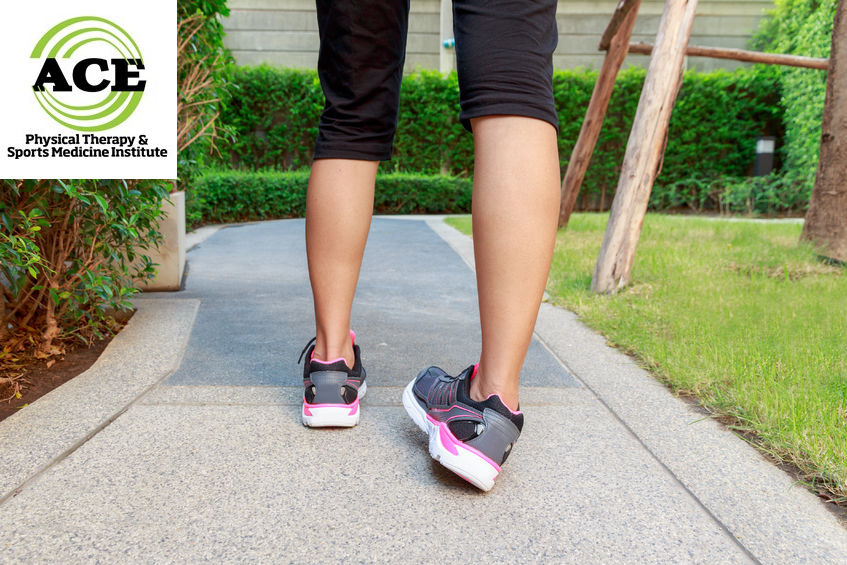TREATING A COMMON ANKLE SPRAIN

Tid Bits of Info
- Ankle sprains account for nearly 30% of all orthopaedic injuries.
- 1 in every 10,000 people sustains an ankle sprain daily in the U.S.
- Lateral or inversion sprains account for 85% of all ankle sprains.
- The Anterior Talofibular Ligament, located on the front of the lateral ankle bone, is completely ruptured in approximately 65% of all ankle sprains.
- Seek the advice and treatment of a Physical Therapist if you sprain your ankle
Some friends are playing disc golf in the park when one player slips and falls: sprained ankle. The friend limps off the field in pain. Ankle sprains are common and can occur on anyone. The most frequently occurring ankle sprain happens when the foot/ankle “rolls to the outside, and the ligaments that statically support the lateral side of the ankle are damaged. Healthcare providers refer to this as an inversion ankle sprain.
Inversion ankle sprains occur when the ligaments are damaged. The outside of the ankle or lateral side has three ligaments that attach the ankle bones, Talus and calcaneus, to distal Fibula. The damaged ligaments lead to pain and instability, therefore, they need to be treated, so they heal and enable the injured person to return to their normal functional level. The damage can be labeled as one of 3 grades with a grade III ankle sprain being the most severe. The ligament is a leather-like structure that provides static stability to a joint. When a grade I sprain occurs, there are no macro-tears of the ligament fibers, but the damage causes pain and swelling in the injured ankle. When the damage is more severe (grade II), there are macro-tears that lead to instability. When the ligament completely ruptures (grade III), there is total disruption of the ligament fibers, severe pain and swelling and great instability in the joint.
There is an age-old question among health care providers: How to treat these different grades of ankle sprains? One camp that promotes total rest and immobilization in a cast for several weeks to allow the ankle to “calm” down and initiate the healing process. The other camp has shown in numerous studies that total immobilization is not needed and in fact might be detrimental to the healing process. They have recommended a functional rehabilitation approach that includes protection and rest in a removable “cast” for 7-10 days, but not complete immobilization at any time and not for 3-4 weeks.
The damaged ligament needs to have time to heal. The first phase of treatment must involve reducing the symptoms of pain and swelling. The RICE principle of therapy can be implemented immediately. RICE, Rest, Ice, Compression and Elevation will begin to control the swelling and pain that occurs immediately after an injury. These symptoms continue to worsen if they are untreated.
The second phase of treatment begins when the swelling and pain have been brought under control. The next step focuses on restoring the motion and re-education of the neuromuscular activity in the joint. The muscles will “shut down” with an injury to the ankle joint, and the severity of the injury correlates with the amount of muscle “shut down” that occurs. The muscles are dependent upon the nervous system to activate them and swelling, and pain can have a tremendous inhibiting influence on their function.
Seeking the advice and treatment of a Physical Therapist will be an integral part of your rehabilitation process. The ability to return to pre-injury status will be dependent upon gaining full motion, strength, and proprioception in the ankle and foot joints. When the nerves and muscles work together as a team, the function of the injured foot/ankle will improve to pre-injury status.
Ankle sprains are one of the most common orthopaedic injuries that occur on a daily basis and they do not discriminate against anyone. The mechanism of injury can differ, but the result is similar for everyone. The lateral ligaments are damaged, and depending on the severity a healthcare professional will determine the course of action for a rehabilitation program. In most instances, total immobilization in a cast is not necessary and better results occur when the injured ankle is put through a functional rehabilitation program.
